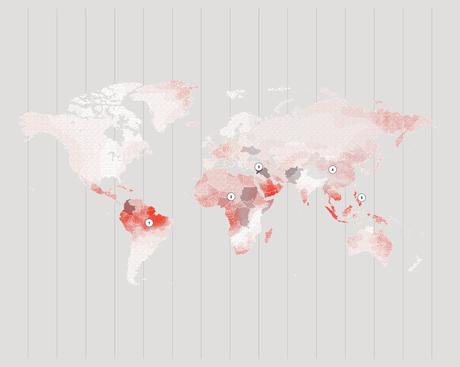GR: Thoughts on Climate Change
The climate news today (and really every day now) is not good. The Times article below focuses on just one of the bad bits. Global warming and consequent shifts in weather patterns are stressing everyone, but especially those people living in equatorial regions. Droughts, fires, and floods are becoming intolerable. The emerging climate-change-driven diaspora will carry the stress north and south into temperate latitudes. Projections made by many scientists in the U. S., European Union, and Asia portray a dismal future for Earth and humanity.
A Glimpse of Future Earth
Climate-change emigrants and their descendents moving north will not escape the ravages of a warming planet for very long. Stresses in northern latitudes have already begun. As the human population squeezes north to find food and water, resources will dwindle and conflicts will intensify. Nature in even the diminished form that we see now will sink toward unsustainable levels where wild plants and animals, then watersheds, then soils, and then fresh water are lost.
As I look out across my fields of invasive weeds and my ponds and small stream choked with artificially fertilized algae and filled with invasive animals, I remember the sunflowered fields and sparkling creek of my history. As the pace of climate change accelerates, “the good old days” will become a meaningful phrase for younger and younger people facing a constant need to adapt to more difficult times.
Want to keep up with the changes? The Daily Climate carries the best selection of current stories I’ve found. The Daily Climate included a link to the story below along with dozens of others. (Header image: A farmer tries to revive his unconscious cow. Photo by CNN.)

Illustration by La Tigre.

“Climate change is not equal across the globe, and neither are its longer term consequences. This map overlays human turmoil — represented here by United Nations data on nearly 64 million “persons of concern,” whose numbers have tripled since 2005 — with climate turmoil, represented by data from NASA’s Common Sense Climate Index. The correlation is striking. Climate change is a threat multiplier: It contributes to economic and political instability and also worsens the effects. It propels sudden-onset disasters like floods and storms and slow-onset disasters like drought and desertification; those disasters contribute to failed crops, famine and overcrowded urban centers; those crises inflame political unrest and worsen the impacts of war, which leads to even more displacement. There is no internationally recognized legal definition for “environmental migrants” or “climate refugees,” so there is no formal reckoning of how many have left their homes because climate change has made their lives or livelihoods untenable. In a 2010 Gallup World Poll, though, about 12 percent of respondents — representing a total of 500 million adults — said severe environmental problems would require them to move within the next five years.
-
‘Amazon Basin: As glacial melting reduces freshwater reserves for the Andean plain, tensions are growing between locals and the mining and agribusiness operations that consume much of what remains. Researchers predict that this resource conflict will drive more migrants to the Amazon Basin where many have already turned to informal mining and coca cultivation, fueling the rise of criminal syndicates.
-
“Lake Chad, 3. Syria, 4. China, 5. Philippines” –Jessica Benko (New York Times: Continue reading.)

